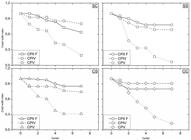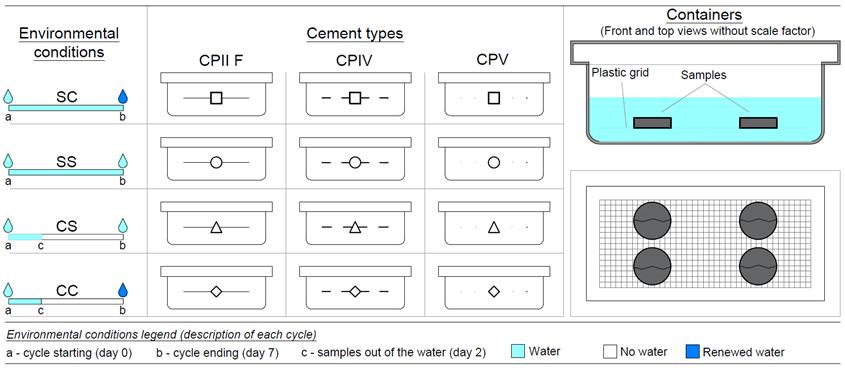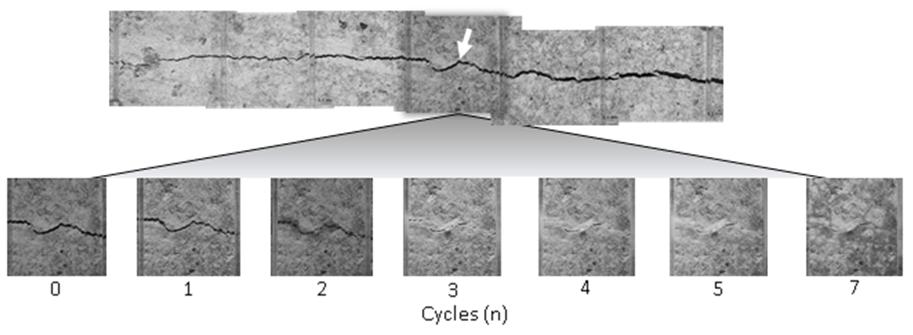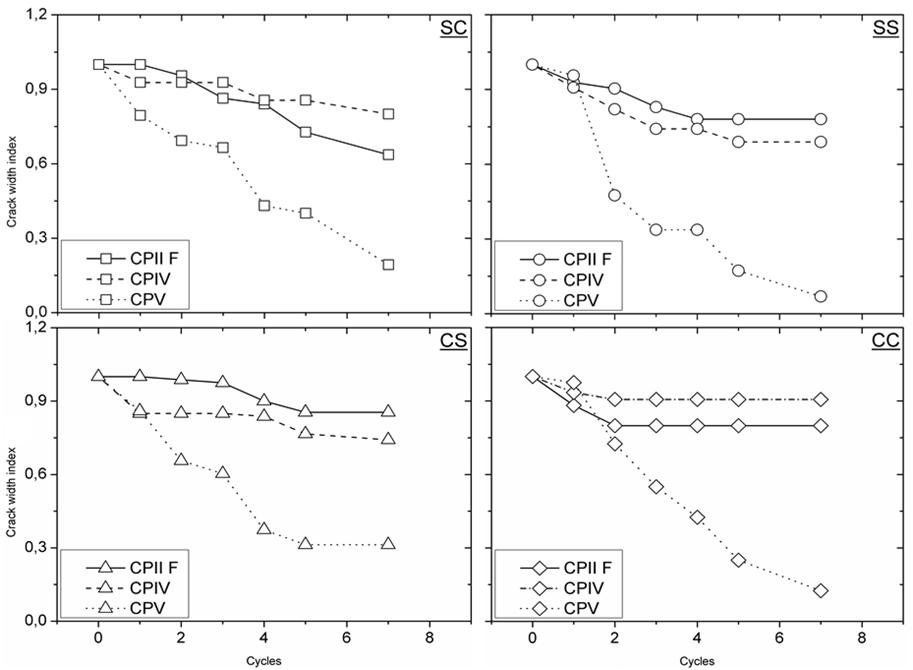Abstract
Several factors, such as chemical shrinkage or environmental attack can produce concrete cracks. Calcium hydroxide content from the environment or cement hydration can promote the self-healing phenomenon (SHP). This study evaluates the calcium hydroxide concentration influence on the self-healing phenomenon of cement-based materials. Cracked mortars with different types of cement, such as a filler, pozzolanic, and high initial strength, were exposed to four environmental conditions. Titration was the method proposed to determine the amount of calcium hydroxide content leached in the water, and the cracks closure were analyzed by optical microscopy. CPII F (Portland Cement, type II, compound with limestone) samples showed no trend to Ca(OH)2 leached, and to superficial cracking closure. Regarding CPV (Portland cement, type V, high initial strength cement) samples, their behavior showed the highest Ca(OH)2 content to all environmental exposure, and cracking closure to samples in submerged condition. Thus, a significant influence in the cracks´ closure regarding the presence of Ca2+ leached to the exposure environments, and a water source related to this behavior seems to be a primary factor to improve the SHP.
Keywords:
Calcium hydroxide content; Self-healing; Cracks; Environmental conditions

 Thumbnail
Thumbnail
 Thumbnail
Thumbnail
 Thumbnail
Thumbnail
 Thumbnail
Thumbnail
 Thumbnail
Thumbnail
 Thumbnail
Thumbnail
 Thumbnail
Thumbnail
 Thumbnail
Thumbnail







